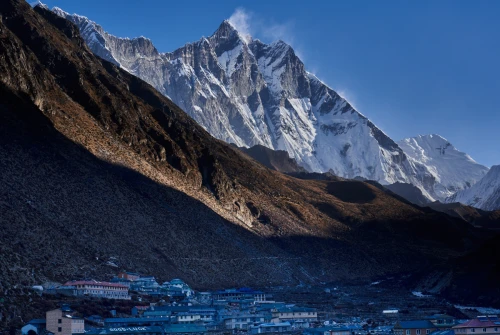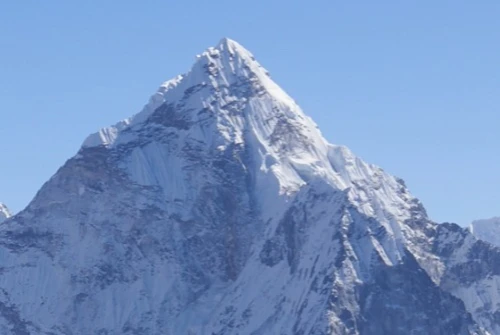If you've ever dreamt of experiencing the world's tallest mountain firsthand and embarking on an incredible overland trek in a remote and breathtaking corner of the world, our eight-day Everest Base Camp Trek might be perfect for you. While prior trekking experience is not necessary, it's important to note that this is a moderately challenging trail with a maximum elevation of over 5,500 meters. Each day, you can expect to walk for six to seven hours, navigating through side valleys and high-altitude passes.
To fully enjoy this trek, it's important to be in good health and physically fit. While acclimatization days are not included in this itinerary, having previous trekking or hiking experience can be advantageous. Many trekkers prefer to undertake the Everest Base Camp Trek during the autumn season, from September to November, as the weather is usually clear, providing stunning mountain views. Winter treks are also possible, offering a quieter and more serene experience, though temperatures can be cold and trails may be covered in snow.
It's worth noting that this eight-day trek to Everest Base Camp is suitable for any group of travelers who can walk for four to six hours a day. It's a moderate hike that doesn't require any technical climbing skills.
Best Time of Year for Everest Trek 8-Day
The best time for embarking on the 8-day Everest Trek is significantly influenced by the ever-changing weather patterns in the Himalayan region. The selection of the most suitable trekking seasons hinges on the avoidance of the wettest conditions associated with the arrival of the summer monsoon. For those seeking to ensure an enjoyable and comfortable experience, the spring season spanning from February to March emerges as an ideal period. During this time, the landscape comes alive with the vibrant hues of wildflowers, and temperatures are at their most agreeable. This enchanting season offers trekkers the chance to revel in the natural beauty of the surroundings while relishing comfortable weather conditions.
Alternatively, the autumn season from September to November presents another compelling window for undertaking the 8-day Everest Trek. This period is renowned for its crisp, clear days that bestow unhindered views of the majestic mountain vistas. The allure of this season lies in its splendid panoramas and favorable climatic conditions, making it a popular choice for trekkers seeking a captivating experience. Although winter treks are an option, it's important to be prepared for colder temperatures and snow-covered trails. Despite the challenging weather, there's an undeniable charm in embracing the serenity of the trek without the usual influx of fellow adventurers.
While summer treks are generally not recommended due to the potential weather challenges, it's worth noting that All Nepal Hiking is adept at crafting suitable Himalayan adventures on alternative routes for those whose schedules align with the summer months. Ultimately, the choice of when to embark on the 8-day Everest Trek depends on your preferences, tolerance for weather conditions, and the kind of experience you wish to derive from this incredible journey.
Difficulty Level for Everest Trek 8-Day
Participating in the 8-day Everest Base Camp Hike doesn't necessitate prior trekking experience, but it's important to recognize that this journey falls within the realm of moderately challenging trails. With a peak elevation exceeding 5,500 meters, you'll be venturing into high-altitude terrain that demands a certain level of physical fitness. Each day, you'll be engaging in walking activities for around six to seven hours, navigating a path that encompasses both ascents and descents while traversing numerous side valleys and mountain passes.
Given these considerations, ensuring your good health and physical readiness before embarking on this trek is paramount. Although acclimatization days are not included in this itinerary, your past trekking or hiking experience could prove advantageous. Engaging in cardiovascular exercises such as walking and running can help prepare your body for the rigors of crossing off Mt. Everest from your bucket list. To guide you through this challenging endeavor, an experienced guide from Alpine Ramble Treks will be assigned to monitor your progress, condition, and safety as you journey from Lukla to Everest Base Camp and back.
Completing this trek is feasible with proper physical preparation. However, maintaining a positive mindset will also play a crucial role in determining your success. While the route aligns with the traditional 12-day EBC hike, it doesn't incorporate designated acclimatization days. This adjustment is suitable for those who possess a strong level of physical endurance, as the itinerary gradually ascends from lower altitudes to higher elevations.
Furthermore, the 8-Day Everest Base Camp trek is attainable for any group of travelers capable of walking for four to six hours daily. It's characterized as an intermediate-level hike that doesn't require specialized climbing skills, making it accessible to a wide range of adventure enthusiasts.
Food On Everest Trek 8-Day
As you journey towards the base of the world's tallest mountain, you'll ascend into a realm of rugged landscapes dominated by rocks and snow. In this high-altitude environment, where the terrain transitions from trees to alpine meadows and glacial moraines, you might assume that your creature comforts would be left behind. However, the reality is quite the opposite. Despite the challenging surroundings, you won't have to compromise on satisfying your culinary preferences. Nourishment becomes paramount at elevated altitudes, and the teahouses within the Khumbu region are prepared to cater to your needs with an unexpectedly diverse array of dishes.
At the start of each day on the trek, you can anticipate a range of hearty and nutritious options to fuel your body for a full day of hiking. The breakfast menu presents both familiar choices, such as oatmeal, French toast, muesli, cereal, hash browns, and a variety of egg preparations, as well as unique offerings like Tibetan bread or Gurung bread – a pan-fried, round, and puffy delicacy that pairs wonderfully with wild honey. Don't miss the chance to try chapati, a dry flatbread often accompanied by cheese, showcasing Nepali flavors.
During the extensive trekking days, our group will frequently pause at local villages to refuel with lunch. These breaks provide opportunities to savor regional delicacies like Thukpa, a noodle-based soup originating from Tibet but modified in Nepal to incorporate chili powder and masala seasonings. Dal Bhat, a renowned dish embraced by trekkers across the nation, consists of lentil soup served with rice and enhanced by a medley of spices and herbs. This hearty meal is often offered in a buffet-style arrangement. For those inclined towards Western cuisine, lunch options include sandwiches, potatoes, and even pizza.
As the day winds down, dinner entails selecting from a menu similar to the lunch offerings: Thukpa, dal Bhat, stews, various curries, and even pizza. However, a must-try for every trekker is momos – dumplings that embody a true Himalayan specialty. These dumplings are filled with either meat or cheese, expertly steamed or fried. Indulging in momos accompanied by a warm mug of tea while witnessing the sun's descent behind the mountains is an essential trekking experience. For dessert, you have the option of relishing rice pudding, apple pie, pastries, or savoring a favorite hiker's treat: a Snickers bar.
It's worth noting that while teahouse menus encompass a variety of meat-based and non-vegetarian dishes, it's important to consider that most of these ingredients are transported from Kathmandu to Lukla and then carried by porters to the mountain villages of Khumbu, without refrigeration. Consequently, meat-based dishes might pose a risk of upsetting your stomach in these conditions. Moreover, to ensure a safe trekking experience at high altitudes, it's advisable to abstain from alcohol and tobacco consumption.

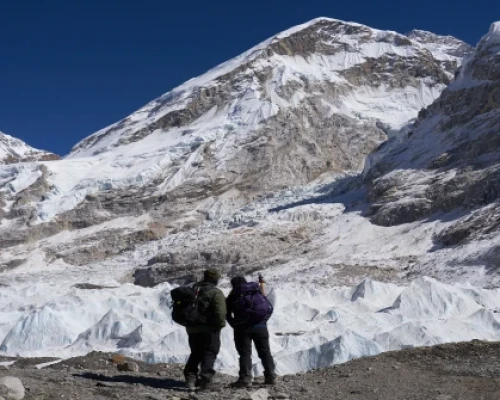

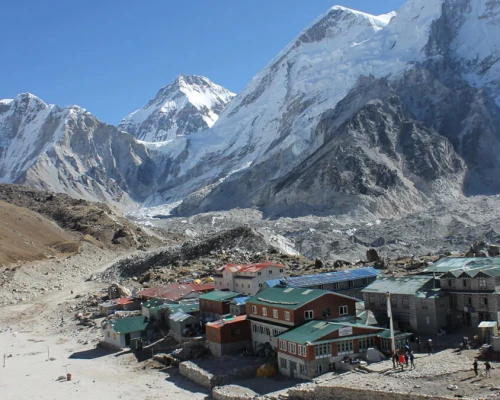
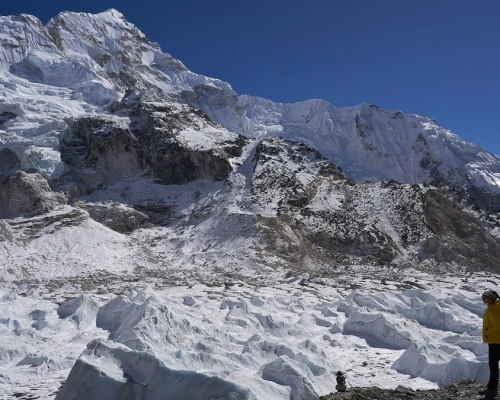
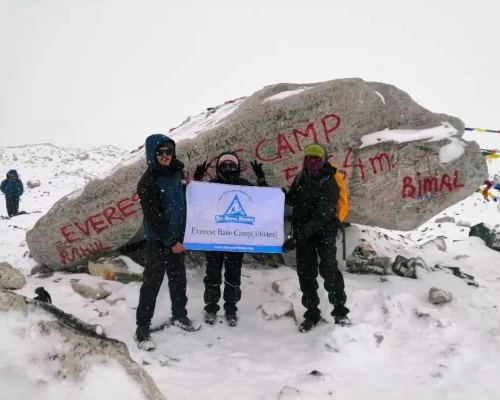
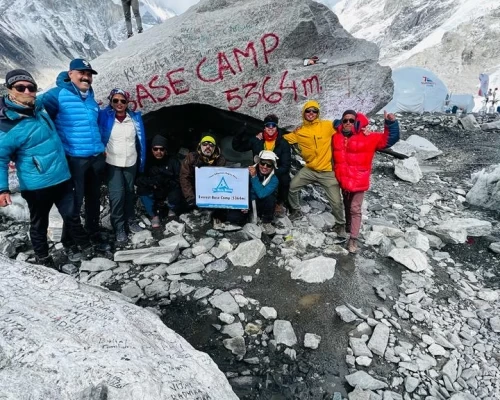
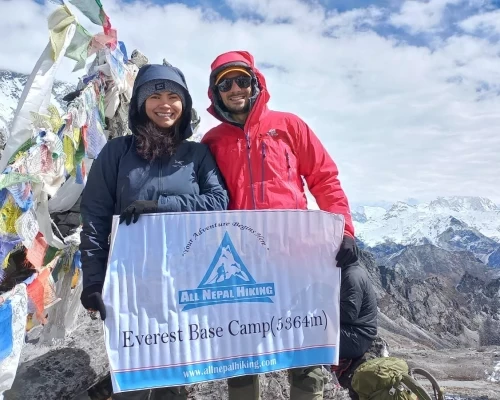
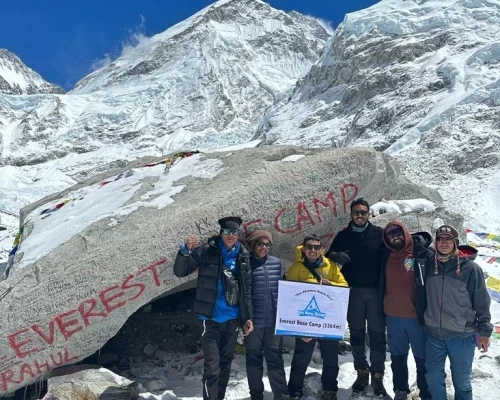
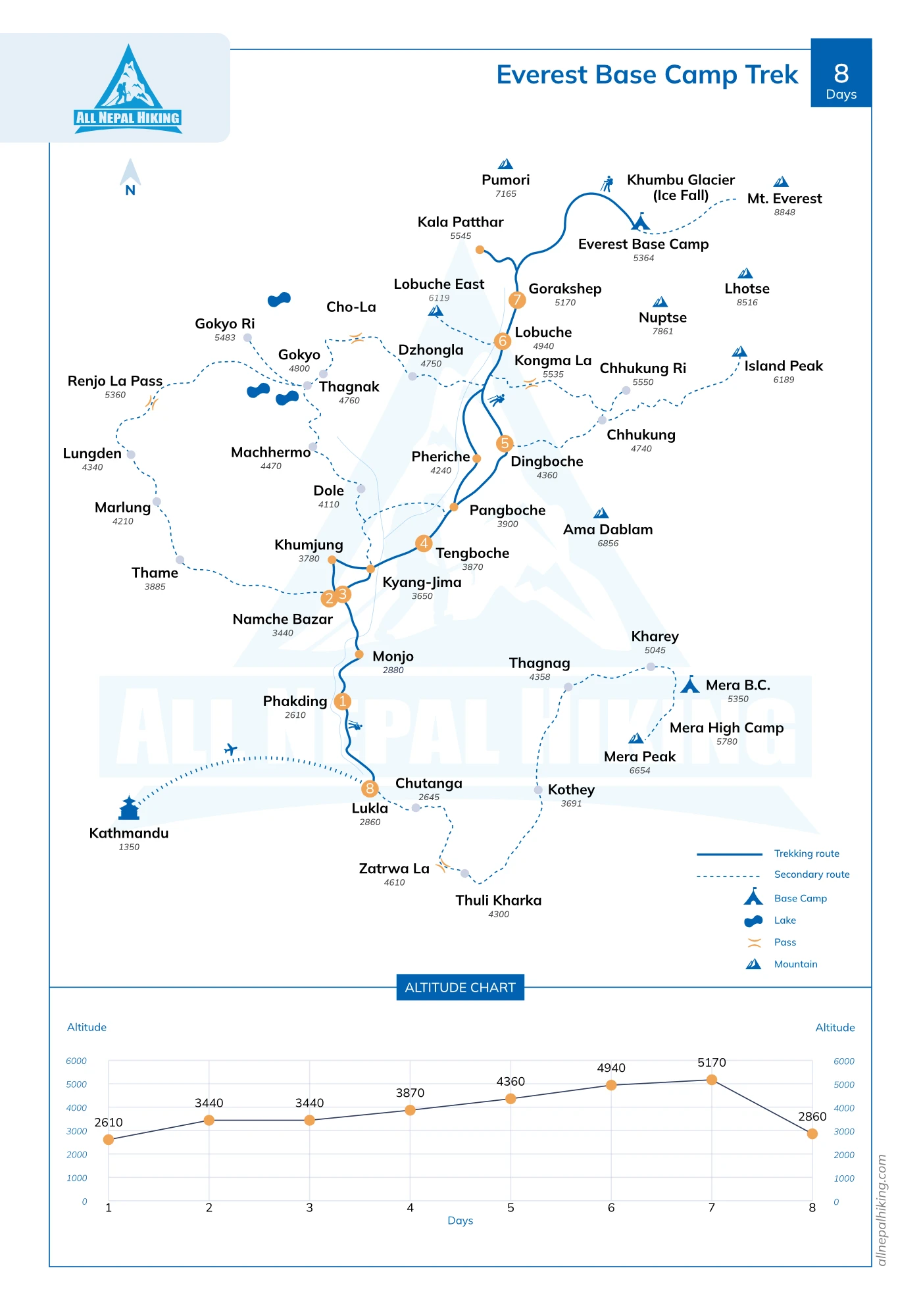

 based on 9 reviews
based on 9 reviews